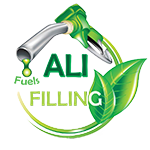AI Chatbot for Insurance Agencies IBM watsonx Assistant
It can ask users a series of questions about their symptoms and provide preliminary assessments or suggestions based on the information provided. It is suitable to deliver general healthcare knowledge, including information about medical conditions, medications, treatment options, and preventive measures. Besides, it can collect and analyze data from wearable devices or other sources to monitor users’ health parameters, such as heart rate or blood pressure, and provide relevant feedback or alerts. Recently Chatbots.Studio built a car insurance chatbot to process claims for a UK client.
The chatbot is available 24/7 and has helped State Farm improve client satisfaction by 7%. Moreover, training is essential for AI to succeed, which entails the collection of new information as new scenarios arise. However, this may involve the passing on of private data, medical or financial, to the chatbot, which stores it somewhere in the digital world. She chatbot for health insurance creates contextual, insightful, and conversational content for business audiences across a broad range of industries and categories like Customer Service, Customer Experience (CX), Chatbots, and more. Also, it’s required to maintain the infrastructure to ensure the large language model has the necessary amount of computing power to process user requests.
Top benefits of insurance chatbots
As chatbots remove diagnostic opportunities from the physician’s field of work, training in diagnosis and patient communication may deteriorate in quality. The development of more reliable algorithms for healthcare chatbots requires programming experts who require payment. Moreover, backup systems must be designed for failsafe operations, involving practices that make it more costly, and which may introduce unexpected problems.

Healthcare providers can overcome this challenge by investing in data integration technologies that allow chatbots to access patient data in real-time. While chatbots can provide personalized support to patients, they cannot replace the human touch. Healthcare providers must ensure that chatbots are used in conjunction with, and not as a replacement for human healthcare professionals.
How are AI chatbots used in healthcare?
Streamline filing accident claims, providing claim status updates, and paying settlements. Read more about the importance of a next-generation conversational AI solution and how Verint is leading the industry forward in this report from IDC. Usually, Texans enrolled in Medicaid — the joint federal-and-state funded insurance program for low-income individuals — are evaluated every year to determine whether they still qualify for insurance. After that rule was suspended during the coronavirus pandemic, extended coverage allowed more than 3 million Texans to continue receiving Medicaid. The program mostly serves low-income children, pregnant and postpartum mothers, and disabled and senior adults. For all their apparent understanding of how a patient feels, they are machines and cannot show empathy.
Secondly, placing too much trust in chatbots may potentially expose the user to data hacking. And finally, patients may feel alienated from their primary care physician or self-diagnose once too often. The widespread use of chatbots can transform the relationship between healthcare professionals and customers, and may fail to take the process of diagnostic reasoning into account.
- By:admin
- 0 comment

Leave a Reply